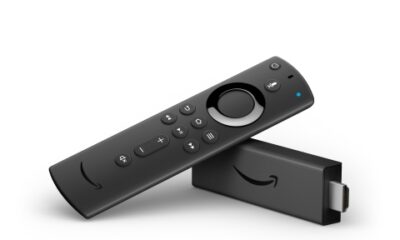Technology
Our bodies don’t die when we do — Scientists discover ‘third state’ of life

We’re always taught that life comes after death.
What happens after death is up for interpretation; some people believe in an afterlife, while others believe in nothing at all.
According to scientists, we might not even be completely dead when we pass away—at least not entirely.
We’re not talking about reanimated zombies, undead vampires, or Frankenstein-like experiments—or even a spiritual sense where our souls continue to exist after dirt returns to dirt and ashes to ashes.
Scientists have discovered what they call a ‘third state’ between life and death, where some cells of an organism survive even after the organism dies.
They don’t just survive – they develop new capabilities they didn’t have in the organism’s life, according to a study published in the Physiology journal.
It may even ‘redefine legal death, the team led by Professor Peter Noble at the University of Washington in Seattle and Alex Pozhitkov at City of Hope National Medical Center, Duarte, California, said.
‘Life and death are traditionally viewed as opposites’, they wrote in an article for The Conversation.
‘But the emergence of new multicellular life-forms from the cells of a dead organism introduces a ‘third state’ that lies beyond the traditional boundaries of life and death.
‘Certain cells – when provided with nutrients, oxygen, bioelectricity or biochemical cues – have the capacity to transform into multicellular organisms with new functions after death.’
We can already see evidence of this through the donation of organs, tissues and cells, which continue to function after their donor’s death.
These researchers were driven to re-assess our understanding of life and death after previous research suggested some parts of the body live on and evolve.
A 2021 study found deceased frogs’ skin cells started using small, hair-like structures called cilia, usually used to move mucus, to navigate their surroundings.
They refer to their spontaneously reorganised multicellular organisms, xenobots, which are able to replicate themselves without growing as would usually happen within a living organism.
Similar results were found in a study of human lung cells, which were able to re-assemble, move around, and even repair themselves and nearby cells. These are called anthrobots.
Their lifespan is limited, however, from just a few hours to a matter of weeks, but there is potential for their use in medical treatment.
One suggestion is using anthrobots, sourced from a living person, as a vehicle for injected drugs that won’t turn the body’s immune system against them.
How any of this life after death is possible isn’t known for certain, but the researchers suggest the outer membrane of cells can act as an electrical circuit.
They said: ‘These channels and pumps generate electrical signals that allow cells to communicate with each other and execute specific functions such as growth and movement, shaping the structure of the organism they form.’

-

 Technology2 years ago
Technology2 years agoVoIP Number: Everything You Need To Know
-

 Music4 weeks ago
Music4 weeks ago[Music] Gnash Ft Olivia O’Brien – I Hate you, I Love you
-

 Music3 weeks ago
Music3 weeks ago[INSTRUMENTAL] John Legend – All Of Me
-

 Music4 weeks ago
Music4 weeks agoAlan Walker – Faded [INSTRUMENTAL]
-

 Music3 weeks ago
Music3 weeks ago[Video] 21 Savage ft. Offset & Metro Boomin – Rap Saved Me
-

 Music4 weeks ago
Music4 weeks ago[Instrumental] Wiz Khalifa – See You Again ft. Charlie Puth
-

 ANE Stories4 months ago
ANE Stories4 months ago[STORY] AMAKA THE LESBIAN (Complete Episodes)
-

 Music4 weeks ago
Music4 weeks ago[Music] Akon – Sorry Blame It On Me















































